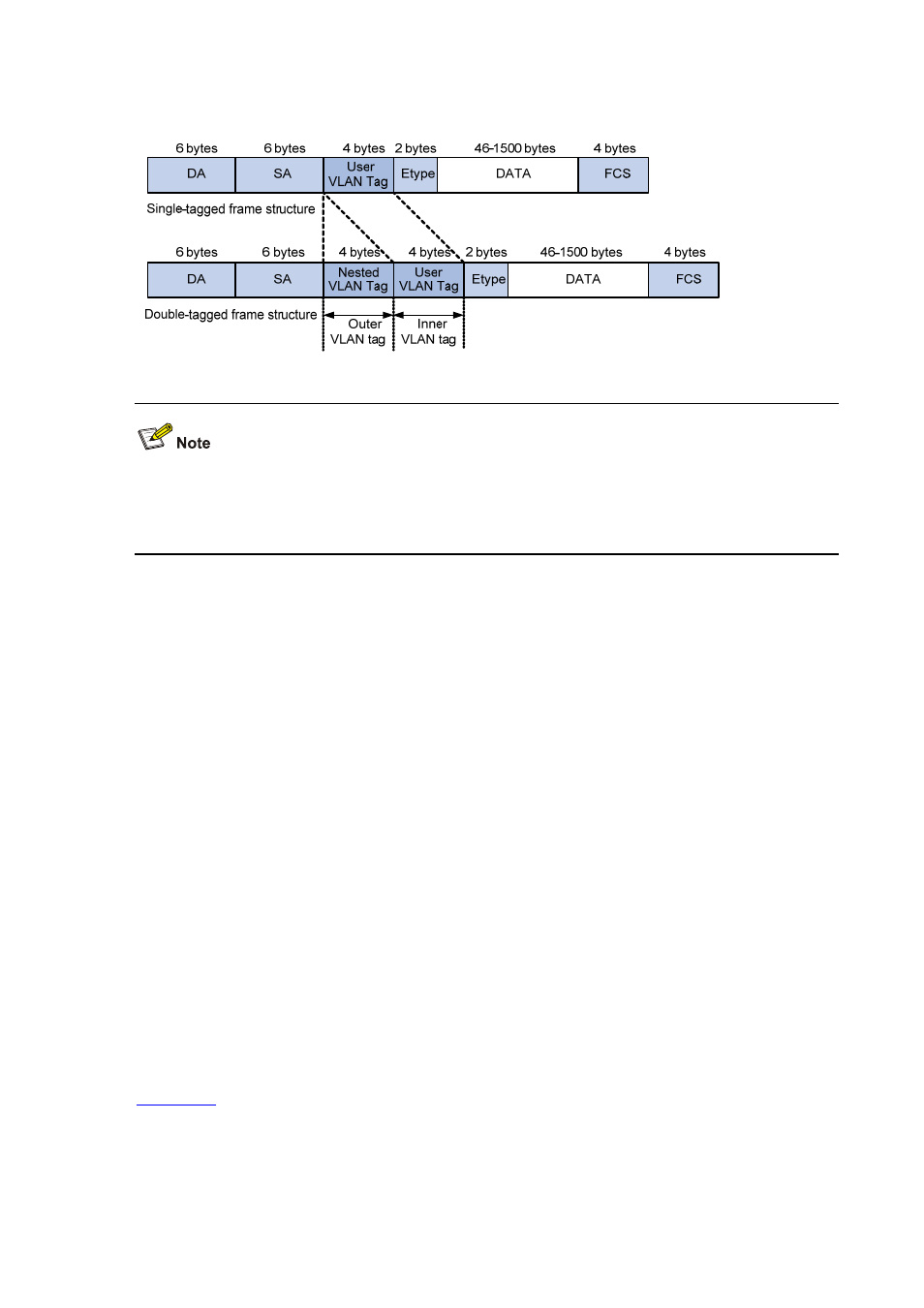Implementations of qinq, Modification of the tpid value in vlan tags – H3C Technologies H3C S7500E Series Switches User Manual
Page 272

20-3
Figure 20-2
Single-tagged frame structure vs. double-tagged Ethernet frame structure
Ensure that all ports on the path of a QinQ packet allow 1508-byte or larger frames to pass through.
The minimum size of a QinQ packet is 1508 bytes, which comprises two four-byte VLAN tags and one
1500-byte standard Ethernet frame.
Implementations of QinQ
There are two types of QinQ implementations: basic QinQ and selective QinQ.
1) Basic
QinQ
Basic QinQ is a port-based feature. When a frame arrives at a basic QinQ-enabled port, the port tags it
with the port’s default VLAN tag, regardless of whether the frame is tagged or untagged. If the received
frame is already tagged, it becomes a double-tagged frame; if it is untagged, it becomes a frame
tagged with the port’s default VLAN tag.
2) Selective
QinQ
Selective QinQ is an implementation more flexible than basic QinQ. In addition to all the functions of
basic QinQ, selective QinQ can tag frames with different outer VLAN tags based on their inner VLAN
IDs.
The S7500E series implements selective QinQ by using customer VLAN IDs as match criteria to
classify frames and then tagging the frames that match a certain VLAN ID with the outer VLAN tag
defined in the associated traffic behavior.
Modification of the TPID Value in VLAN Tags
A VLAN tag uses the tag protocol identifier (TPID) field to identify the protocol type of the tag. The
value of this field, as defined in IEEE 802.1Q, is 0x8100.
shows the 802.1Q-defined tag structure of an Ethernet frame.
